One lovely evening last summer I was enjoying a cocktail in my friend Joanie’s backyard. As we sat there sipping tequila and sodas in the gloaming, about a half dozen hummingbirds showed up to join the party.
We watched them for more than 30 minutes, sipping nectar from her feeders and then zipping over to her tangle of butterfly bush, where they’d hover over a flower and push their long beaks into one scarlet bloom after the other. It was mesmerizing: the calming buzz of their wings (which beat up to 5,400 times per minute), the precision of their beaks, the deftness of their flying, the way their feathers turn iridescent green when the light hits them a certain way.
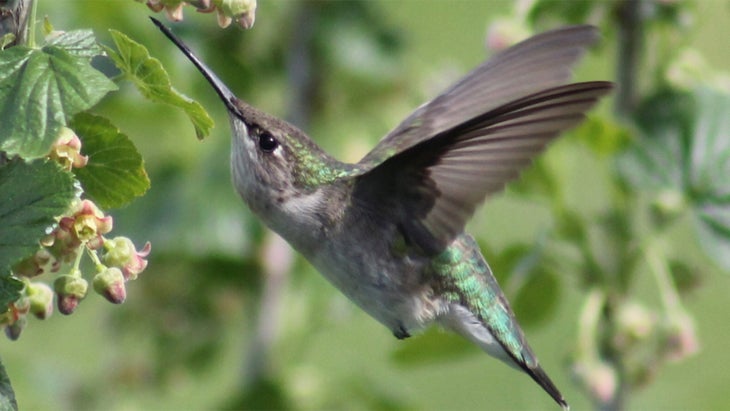
Joanie, an artist and landscape designer, had intentionally created prime habitat for hummingbirds. And not just because they’re freaking cool to watch. She did it because they, like bees, are pollinating superheroes. And pollinators, in case you didn’t know, are critical to both human survival and a healthy planet.
I was hooked and began wondering how to attract hummingbirds to my yard. After some research, I hatched a plan.
How Do Hummingbirds Help the World?
According to Pollinator Partnership, an astounding of food we eat can be traced to the work of pollinators like hummingbirds (along with other birds, bats, bees, butterflies, and beetles).
“Many plant species depend on hummingbirds as their main source of pollination,” says Anthony Colangelo from Pollinator Partnership, a nonprofit devoted to preserving and protecting the health of pollinators in North America.
Hummingbirds, Colangelo told me, are considered a keystone species. It means that their presence within an ecosystem has a disproportionate effect on other organisms within the system. How? “They are relentless workers and fast fliers, visiting 1,000 to 2,000 flowers in a single day, transferring pollen, from one plant to the next,” says Colangelo. “They provide an essential service in our food web and help maintain healthy levels of biodiversity.”
What Role Do Hummingbirds Play in Pollination?
In its simplest form, pollination is like sex for plants. It’s how they reproduce and form fruits and new flowers. Think of a pollen grain as a sperm. “When a pollen grain moves from the anther (male part) of a flower to the stigma (female part), pollination happens,” says Colangelo. “This is the first step in a process that produces seeds, fruits, and the next generation of plants, and it can happen through self-pollination, wind and water pollination, or through the work of hummingbirds and other pollinating animals that move pollen within the flower and from bloom to bloom.”
This summer, watching this in action has been one of my favorite pastimes. Here’s what it looks like: A bird appears, seemingly out of nowhere, and I hear that wonderful vibrating purr. It hovers at a flower and inserts its long beak into the bloom for a few seconds. “As it’s lapping up the nectar, pollen grains stick to its beak and facial feathers,” says Colangelo. “It’s kind of like the flower is rewarding the hummingbird for visiting it.”
Next, the bird flits to another bloom, inserts its pollen-dusted beak, where it touches and fertilizes that flower’s reproductive organs and also gathers more pollen on its face. Then off it goes to the next bloom, and the next, and the next.
In an ideal world, hummingbirds have an endless pathway of native flowers to visit. But sadly, they often don’t, which is where we come in.
What Happens If Hummingbirds Go Extinct?
If hummingbirds went extinct, . “90 percent of the world’s flowering plants and 87 of the top 128 global food crops need animal pollinators,” says Colangelo.
Of the 366 different hummingbird species (all of which live exclusively in the Western Hemisphere), “about 8 percent are endangered or critically endangered due to habitat loss and fragmentation, climate change, and invasive plants outcompeting natives in the landscape,” says Colangelo.
In the winter, like many living beings (including humans), hummingbirds migrate south to warmer weather. That’s why creating pollinator pathways—cohesive networks of pollinating flowers and habitat—is crucial.
“Hummingbirds live such energetic lives so they require lots of nectar (carbs) to fuel their daily flight,” says Colangelo. “Having lots of connected pathways reduces the amount of energy they have to spend finding food so they can expend that energy in other ways that keep their populations healthy, like finding mates, building nests, having and caring for babies, nest building, parental care.”
5 Ways to Attract Hummingbirds
Even though I’ve been an avid outdoorswoman my whole life, birding has never been something I’ve been that into. So it’s surprising and kind of ridiculous how hummingbirds now thrill me. In fact, of all the sustainability actions I’ve taken in my life, this one is perhaps the most gratifying. A year ago, I had no hummingbirds. Now they visit me every day, pollinating my little piece of the world. And all I had to do was roll out the welcome mat.
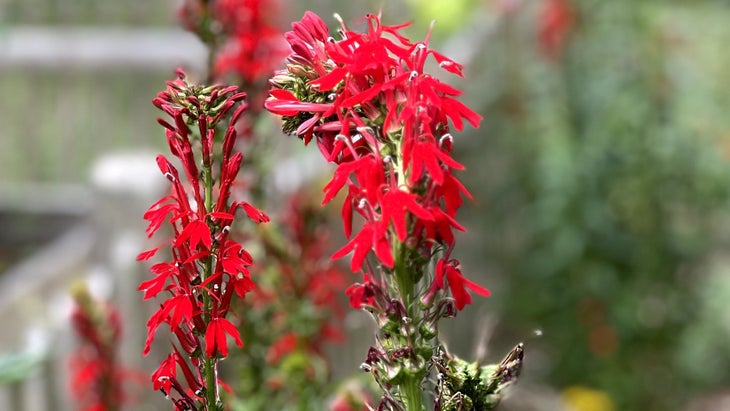
Here’s how you can do it, too.
1. Plant a few key plants
Hummingbirds are attracted to bright red, orange, and sometimes yellow flowers. They prefer those with tubular blooms, ones that accommodate their long beaks. I chose ruby red cardinal flowers (Lobelia cardinalis), which are native to my region. (Find your local native plants with these .) Just three plants placed in the border of my vegetable garden did the trick. Almost every time I look at the beautiful red flowers, there’s at least one hummingbird nearby.
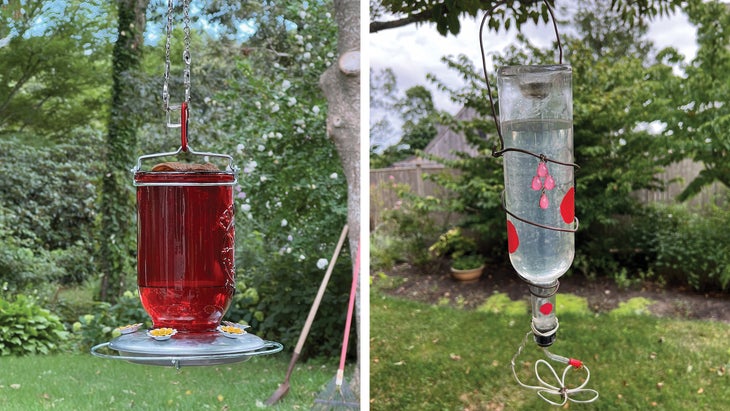
2. Hang a feeder or two
Feeders are a great way to attract hummingbirds to your space because they give you the opportunity to watch and fall in love with them. But don’t rely on feeders alone, cautions Colangelo. “Feeders are like Gatorade,” he says. “They provide the birds with a fast and easy hit of energy so they can keep working, but hummingbirds can’t pollinate from a feeder. For that they need the native flowers.”
You can buy hummingbird feeders like , which I like because it’s made of red glass rather than plastic, or make one yourself. I fashioned my own using a purchased , a recycled wine bottle, bits of wire, and some old red jewelry to attract the birds.
To fill the feeders, I make my own nectar by heating one part white sugar with four parts water until the sugar dissolves. Resist the urge to purchase hummingbird food tinted with red dye, which could harm the birds. And regularly: twice per week in hot weather and once per week in cooler temps.
3. Provide water for drinking and bathing
I made two water sources for my hummingbirds. The first is an ancient bird bath I scored off a Buy Nothing local Facebook group. It had cracks which I patched up with some quick-set concrete mix. The second is a lovely little fountain I made with an old garden pot, some river stones, and a purchased .
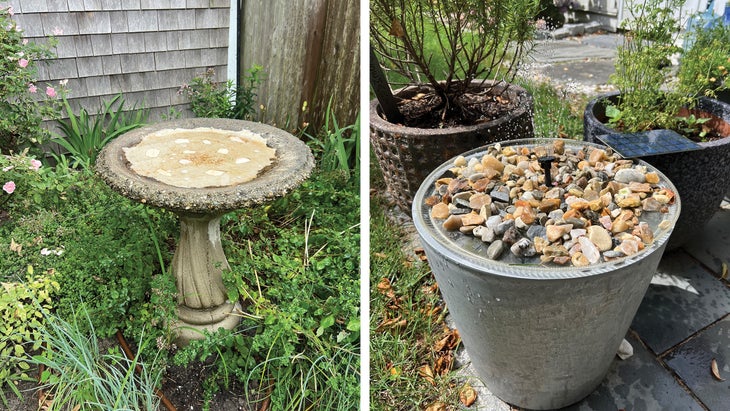
4. If you have an outdoor cat, put a bell on it
Cats are a big threat to hummingbirds and can snatch them right off of low-hanging feeders. Be sure to hang your feeders at least four feet off the ground, and consider putting a bell on your cat’s collar to warn the birds of their presence.
5. Support conservation organizations
Nonprofits like and work to educate the public on the importance of pollinators as well as provide tools and resources for people who want to rewild their yards to welcome pollinators.
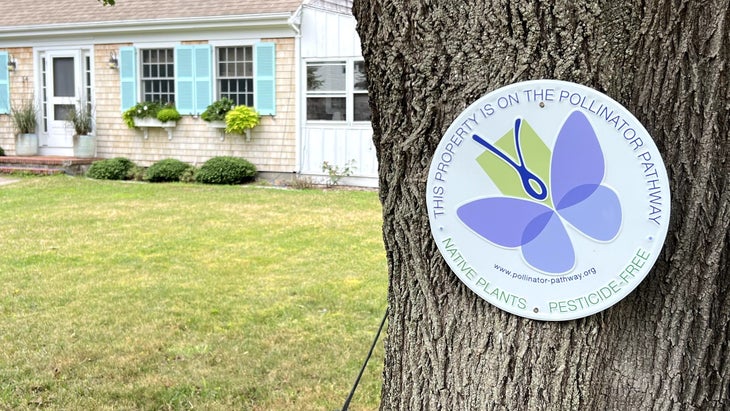
If it’s 5 o’clock, you can probably find Kristin Hostetter sitting in her pesticide-free backyard on Cape Cod with a cold drink and a bird book watching the hummingbirds. Follow her journey to live more sustainably by for her twice-monthly newsletter.
